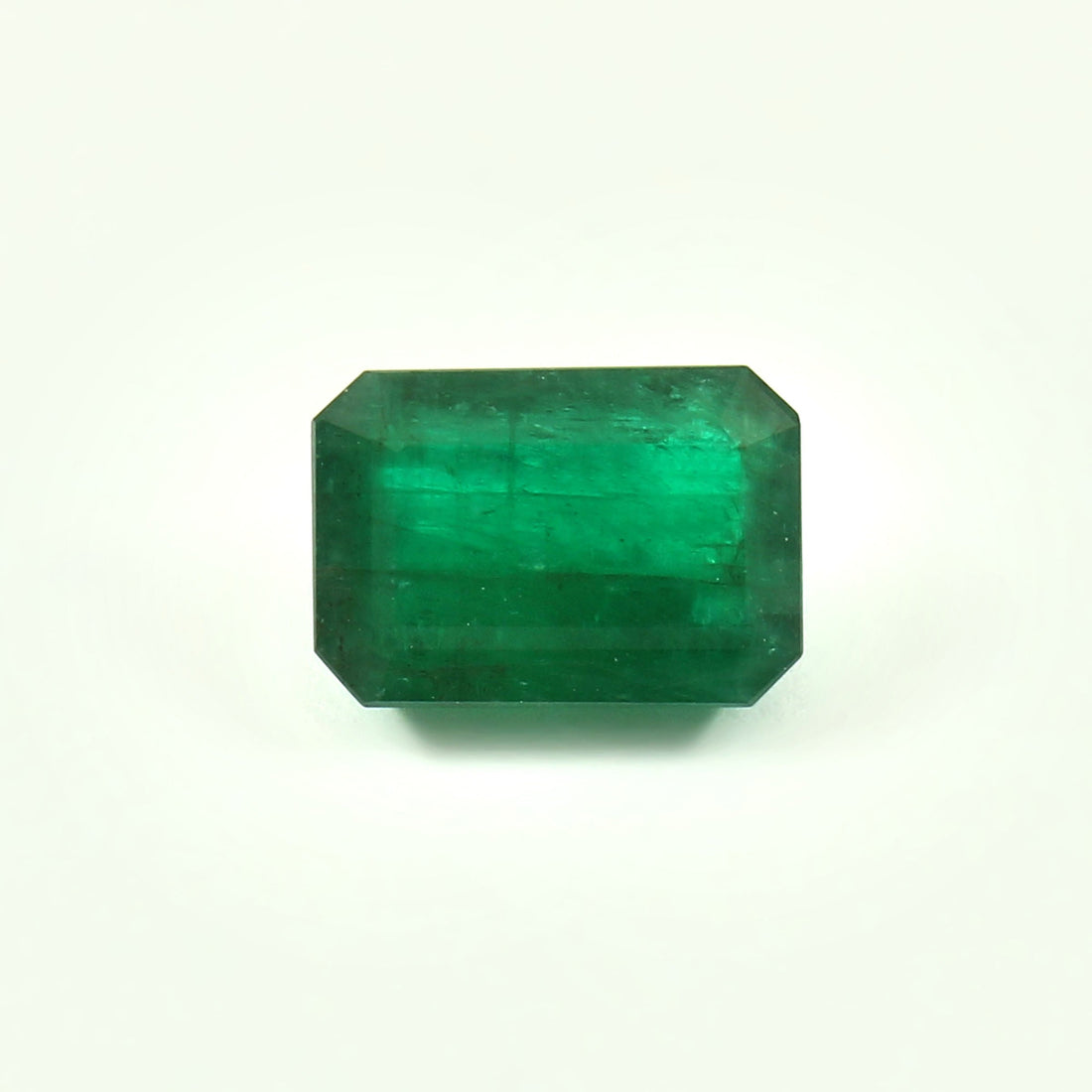
Lab-Grown Emeralds vs. Natural: What Shoppers Need to Know
Share
Emeralds have long been coveted for their lush green hue and timeless beauty. As we move into 2025, emerald jewelry is gaining popularity for both its aesthetic appeal and symbolic meaning. The emerald represents rebirth, love, and hope, which makes it a beloved choice for jewelry pieces like engagement rings, necklaces, and earrings.
But when it comes to choosing the perfect emerald, the decision isn't always as straightforward as picking the most beautiful stone. Shoppers are increasingly faced with the choice between natural and lab-grown emeralds. Both options have their advantages, but what makes one a better choice over the other?
In this guide, we’ll break down everything you need to know about natural emeralds versus lab-grown emeralds, so you can make an informed choice for your next purchase.
What Are Natural Emeralds?
Natural emeralds are born deep within the Earth’s crust, formed over millions of years under intense heat and pressure. They are primarily mined from areas in Colombia, Brazil, and Zambia, and each emerald is unique due to the natural inclusions, known as a "jardin," which give the stone its character.
Because of their rarity and the complexities involved in mining, natural emeralds are considered highly valuable. The color, clarity, and size of a natural emerald significantly impact its price. The finest natural emeralds have vivid green hues with minimal inclusions, though most natural emeralds will have some level of internal features due to the stone’s formation process.
Natural emeralds are typically more expensive than lab-grown emeralds because of their rarity, labor-intensive mining process, and long-term value as an investment.
What Are Lab-Grown Emeralds?
Lab-grown emeralds, also called synthetic emeralds, are created in a controlled laboratory environment through a process known as hydrothermal growth or flux growth. These methods replicate the natural conditions under which emeralds form, allowing scientists to create emeralds that are chemically identical to those found in nature.
Lab-grown emeralds have the same chemical composition, structure, and physical properties as their natural counterparts, which makes them nearly indistinguishable to the naked eye. The key difference? Lab-grown emeralds are often more affordable, offering a high-quality option at a fraction of the price of natural emeralds.
One of the most significant advantages of lab-grown emeralds is their ethics and sustainability. Because they don’t require mining, they have a much lower environmental impact and are considered conflict-free, making them an excellent choice for the eco-conscious shopper.
Key Differences Between Lab-Grown and Natural Emeralds
Understanding the distinctions between natural and lab-grown emeralds can help you make an informed purchase. Here are the key factors to consider:
A. Appearance
Both natural and lab-grown emeralds are visually stunning, but natural emeralds can sometimes feature inclusions (jardin) that are unique to each stone. These inclusions are a hallmark of natural gemstones and are often seen as part of their charm.
Lab-grown emeralds, on the other hand, tend to have fewer inclusions and are often clearer, which can make them appear more perfect. However, the lack of inclusions in lab-grown emeralds can also make them feel less organic or unique to some buyers.
B. Price
The most obvious difference between the two types of emeralds is price. Natural emeralds are typically much more expensive because of their rarity, the time it takes for them to form, and the cost of mining. Prices for natural emeralds can range from several hundred to thousands of dollars, depending on the quality of the stone.
Lab-grown emeralds, however, are significantly more affordable, often costing 30%–70% less than natural emeralds. This makes them an attractive option for shoppers on a budget or those looking for a larger emerald at a more reasonable price.
C. Ethics & Sustainability
Lab-grown emeralds are created in a lab under controlled conditions, which means they do not contribute to environmental damage or unethical labor practices. Mining natural emeralds, particularly in countries with lax regulations, can sometimes involve significant environmental destruction and exploitation of workers.
For those who prioritize ethically sourced, eco-friendly options, lab-grown emeralds are a more sustainable choice. They have a smaller carbon footprint, and you can rest assured that the stone hasn’t come from a mine with questionable labor practices.
D. Value & Rarity
Natural emeralds are considered more valuable over time due to their rarity. They are often seen as a symbol of luxury and prestige. Because they are limited in supply, they may hold their value better in the long run compared to lab-grown emeralds.
While lab-grown emeralds don’t have the same long-term investment potential as natural stones, they still offer significant beauty at a lower cost, making them a great option for daily wear or for gifting. If you’re looking for something affordable and beautiful without the long-term value investment, lab-grown emeralds are an excellent choice.
Which One Should You Choose?
Ultimately, the decision between a natural and lab-grown emerald comes down to your priorities:
-
Natural emeralds are ideal if you want the prestige of owning a rare, earth-formed gemstone with historical significance and long-term investment value.
-
Lab-grown emeralds are perfect if you want a high-quality, beautiful stone that’s more affordable, eco-friendly, and ethically sourced. They are also a great choice for those looking to buy emerald jewelry on a budget or for everyday wear.
Both options offer stunning beauty and timeless appeal — the choice really depends on what matters most to you as a shopper.
How to Spot the Difference When Shopping Online
One of the challenges of buying emeralds online is distinguishing between natural and lab-grown stones, especially when the two are often sold at similar price points. Here’s how to make sure you’re buying what you want:
-
Look for Certification: Make sure the emerald you’re buying comes with a certificate of authenticity or a grading report from a reputable gemological laboratory, such as GIA or IGI.
-
Check the Product Description: Reputable online jewelers will clearly label whether an emerald is natural or lab-grown in the product description. If you’re unsure, reach out to customer support for confirmation.
-
Ask for Photos & Videos: Request high-quality images and videos of the stone you’re considering to ensure it meets your expectations for clarity, color, and overall appearance.
What U.S. Shoppers Are Choosing in 2025
In the U.S., lab-grown emeralds are becoming increasingly popular, especially among younger shoppers and those with a more eco-conscious mindset. While natural emeralds still have their place in high-end jewelry markets and investment circles, the affordability and sustainability of lab-grown emeralds make them a top choice for the modern shopper.
Final Thoughts: Making the Right Choice for You
The decision between natural and lab-grown emeralds ultimately comes down to personal preference. There’s no right or wrong choice — just the one that suits your budget, values, and style.
Whether you go for the elegance of a natural emerald or the sustainable luxury of a lab-grown gem, rest assured that both will bring you timeless beauty and brilliance.
Explore Our Emerald Collection at Sierra Emeralds
Ready to shop? At Sierra Emeralds, we offer both natural and lab-grown emerald jewelry to suit every style and budget. Whether you’re looking for a stunning emerald engagement ring or a minimalist pendant, we have something just for you.
💎 Shop now and enjoy free U.S. shipping on all orders!
